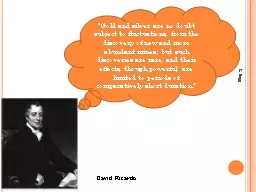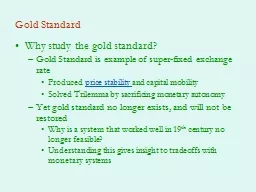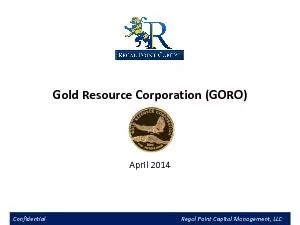PPT-“Gold and silver are no doubt subject to fluctuations, from the discovery of new and
Author : alexa-scheidler | Published Date : 2018-12-20
David Ricardo E Napp Commerce joined with empire were the twin drivers of globalization during the early modern era Created new relationships disrupted old patterns
Presentation Embed Code
Download Presentation
Download Presentation The PPT/PDF document "“Gold and silver are no doubt subject ..." is the property of its rightful owner. Permission is granted to download and print the materials on this website for personal, non-commercial use only, and to display it on your personal computer provided you do not modify the materials and that you retain all copyright notices contained in the materials. By downloading content from our website, you accept the terms of this agreement.
“Gold and silver are no doubt subject to fluctuations, from the discovery of new and: Transcript
Download Rules Of Document
"“Gold and silver are no doubt subject to fluctuations, from the discovery of new and"The content belongs to its owner. You may download and print it for personal use, without modification, and keep all copyright notices. By downloading, you agree to these terms.
Related Documents














